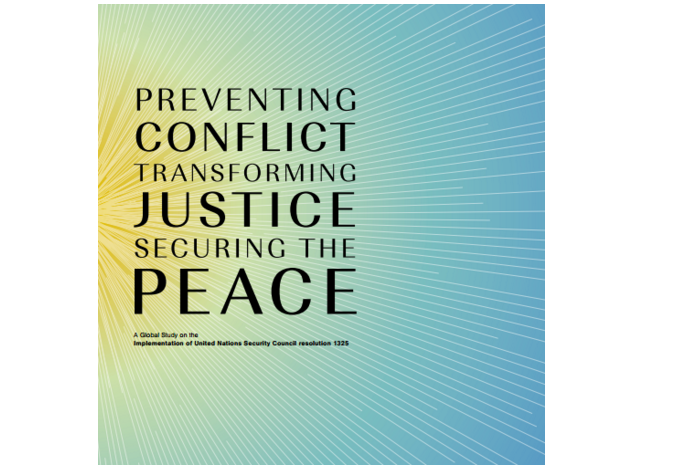Introducing the WPS Global Study: Highlights Part 1 - Context and Framework
By: Joanna Lockspeiser and Marina Kumskova

The Cover of the Global Study Report. Photo Credit: UN Women
PeaceWomen is happy to inform you that we will be sharing highlights derived from the 2015 High Level Review’s Global Study over the next months in our ENews in an attempt to strengthen understanding of the evidence base we use for moving actions forward. Today’s article will provide key takeaways from Chapters 1 and 2.
The Global Study underlines that the nature of conflict, peace, and security has changed since 1325 was passed. Wars today have left the world with the largest number of Internally Displaced Persons (IDPs) and refugees since the Second World War. On the other hand, the adoption of UNSCR 1325 has laid the framework of the Women, Peace and Security (WPS) Agenda in protecting women against sexual violence in conflict, increasing women’s participation in conflict prevention as well as peacebuilding. Some of the key improvements include the emergence of resolutions that focus on preventing, recognizing and responding to sexual violence in conflict (UNSCRs 1820, 1888, 1960, 2106) as well as the invention of new roles and UN bodies to help implement UNSCR 1325 such as Gender Advisors and Women’s Protection Advisers in peacekeeping missions, and UN Action against Sexual Violence in Conflict. Additionally, 55 states have developed National Action Plans and Regional Action Plans which set out a guideline for action to address WPS issues in their state or region.
Unfortunately, the Global Study demonstrates that only a small percentage of women are involved in peace processes. The positive results of the women’s active leadership and participation in peace processes are clearly proven by empirical data. However, the numerous logistical, financial, and cultural barriers to women’s full participation are still evident. In this regard, Member States, the involved UN bodies, and Special Envoys should commit to ensure women’s real and effective participation in all decision-making processes and to raise, as a matter of routine, specific gender issues related to the agenda.
Read the full chapter 1 here>>
Read the full chapter 2 here>>
For brief analyses of the remaining chapters of the Global Study, stay tuned for the next edition of ENews. In the meantime, have a look at the Fact Sheet of the Global Study produced by UN Women!
WILPF INITIATIVES:
Webinar: Toward the Goal of Social Justice: Women's Empowerment and Sustainable Development
Blog: Bloodbath in Syria: Where from the Weapons?
Report from WILPF African Regional Conference in Cameroon
POLICY BRIEFS/REPORTS:
Monthly Action Points - February
Protection Risks for Women and Girls in the European Refugee and Migrant Crisis
No Safety for Women on the European Route
CEDAW Shadow Report: "Unfinished Business: Women’s Rights In The Netherlands”
The Women, Peace and Security Agenda – 15 Years On
Disarmament, Demobilization and Reintegration Processes (DDR): The Gender Asset
WHAT THE WOMEN SAY. We Will Survive: Women’s Rights and Civic Activism in Yemen’s Endless War
EXTERNAL INITIATIVES
Statement in Condemnation of Terrorist Attack Targeting Media Organizations in Afghanistan
